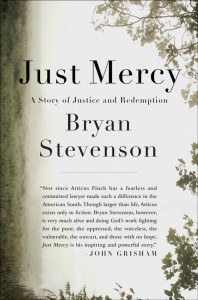A while back I wrote about how anti choicers want abortion to be illegal and seem to equate this with abortion not existing. When you press them on how exactly this would work, they have nothing. Recently I engaged with a pro lifer on the comments section of a Patheos blog and I want to repost our conversation to further illustrate this point. Even someone who seems to have compassion for women can’t explain how an abortion ban would stop abortions.
I noticed a woman posting in the comments of this post and I asked her:
Would you please explain what the law should be regarding abortion? I am pro choice, and I am also a policy wonk, and I do not understand how we could make abortion illegal without for example, legislating mandatory regular pregnancy tests and police investigations of miscarriages. I have written about the logistical problems with an abortion ban and I would love to know your thoughts.
She Answered:
So, my political views are somewhat two-fold. There is what we can be doing right now, and there is what we can be doing in other, let’s say, more advanced circumstances. If you want to boil it all down, yes, the end game is that I would like to see a society that bans abortion at any stage in most cases (but not all), but I think that is neither feasible, nor the priority at this point.
For the right now, there is a lot more that can be done to reduce abortions than what a ban would accomplish. The number one reason why women abort is due to financial reasons. As such, I support progressive policies such as a single payer healthcare system, guaranteed paid maternal and paternal leave, living wages, paid time off for family leave. Tangentially, we need to put more money and care into our adoption and foster care system. We need to make it easier for mothers who would not even be thinking abortion if they felt that adoption was actually a viable option – not just some pie in the sky so-called-option. We need to make it easier for parents to adopt, by increasing ranks of social workers who can do background checks on them, and provide post adoption follow up services.
And we need to do a lot better on the preventative side of things. We need a no apologies diversified stance to sex education. If you are an accredited middle or high school, even if you are catholic, you have to teach about sex-ed that includes birth control options and how to use them. We need to push down the cost of things like IUDs and the pill, and for those who want it, sterilization. And we need to make them fabulously easy to get these things. Again, I see progressive policies as heading in that direction.
I’m sure we can agree pretty well on these first steps, but they are important, and I think they are intrinsic to any ban that is going to both reflect and guide a culture that values all stages of human life, thus being more sustainable. If there aren’t many other, easy options for women (and their men), any ban will be received as well as Roe v Wade has – that is, you’ll get your predictable split of public opinion. Black and white policies usually result in outlier horror stories, be them testimonies of people who survived being aborted, or the horror stories of women whose hospital policies resulted in them not providing them with the medically needed abortion they required to survive.
What is the next step? Probably a 20 week ban*. Let me be clear, this does not reflect what I see as the morality of abortion. I don’t see a huge distinction between 5 minutes before birth versus 5 minutes after – I similarly see no distinction between 5 minutes before 20 weeks and 5 minutes after It is still a tragedy. But from a policy stand point, this does two things. It gets us used to the idea of abortion bans without completely cutting off the option. At that point, women will have known they’ve been pregnant for at least a couple of weeks, so they still have an opportunity to have an abortion at that point. Again, this is a stepping stone. (I’m a big fan of adaptive management as well. Policy doesn’t do adaptive management very well, which is why doing things in steps like this is needed. Implement less strict policy, check out your results, and the next round, you can make adjustments to address the issues of the last round)
*Two caveats to this. First, that while I see the time frame for abortion as being slowly constricted as society finds other ways to avoid or deal with unwanted pregnancy, life of the mother is not up for grabs. A rape exemption, due to the mental self-defense that an abortion could provide a victimized woman, is also something that should be set in stone. Second, I’d want to see this legislation being passed with a rider bill that ensures it is not difficult to obtain abortions within the legal limit. This would include things like ensuring that women didn’t have to travel far (perhaps even compelling hospitals that receive state funding to provide such services or stop receiving funding/ setting up a fund for public clinics for such services where there are none). What? You might say, this seems to be an expansion of abortion, not a reduction! But this is part of the end goal. Acknowledging that there will be times when, sad though it may be, a tragedy to that unborn person though it may be, is required medically or psychologically, I do want to make sure that if it must happen, it happens as safely, as easily, and as much without distress as possible – as I feel about any medical procedure. This will, I think, help the pro-life side of the country come to terms with that idea that sometimes, abortion is the best course. They’ll be seeing a reduction of abortions, particularly later term abortions, and see this as progress on their end too. Eventually, you’d get to a full on ban, and when that happens, you won’t accidentally have a Savita because the infrastructure is there and hospitals will know that not providing services could mean the end of their tenure.
As far as the nuts and bolts go, I don’t see any need to be monitoring women’s fertility. We’re banning abortions, not banning women not being pregnant. And I don’t see prosecuting a woman as effective policy. We don’t assume there has been a murder unless there is evidence that there has been a murder. We don’t go checking in on people, invading their houses to look for dead bodies. Why would we assume there has been an abortion without evidence that there has been an abortion? Additionally, it won’t be effective at enacting a cultural shift to one that values people at any stage if we’ve got some police state going on. In the environmental world, I’ve seen that for policy, the more moving parts, generally, the harder it is to keep track, and the point of service, in this regard, is not the woman, but the abortionist.
So, be it stage one, all the way through to a full ban, how would women who required a medically needed abortion get one? Or who were victims of rape? Let’s keep it to one vector. Doctors can become certified (perhaps a special kind of certification probably following coursework in ethics, as well as what they’ve probably already studied at that point in gynecology, perhaps psychology, etc, that maybe they need to take refresher courses on every couple of years) to offer a legal medical opinion. Any hospital or clinic that offers abortion services has to have at least one of these housed, and they are not paid by the abortion provider, but by a separate fund set up by the gvt. Alternatively, your GP could have this certification if they went through the courses. Maybe you’d require a signature, like a woman goes to her GP complaining of something, GP checks it out, says, this pregnancy has a huge potential of killing you, I prescribe an abortion, you take that prescription note to the clinic or get the in-house certified doctor to examine and check. Of course legal language would have to be included such that a doctor can sign off on an abortion post procedure when needed. Essentially you’d be getting this doctor to not only say after the fact that an abortion was needed, but that timing did not allow for the written recommendation to be given earlier. They sign and stamp that. You might have, as you do with the USDA or EPA, rare, unannounced governmental check-ins, where regulators are checking in at these certified doctor’s offices, going over identity redacted files to gauge whether or not the certified abortion prescriber was generally prescribing abortions for medically needed situations. As far as a rape exemption would play out, I’d see a situation where I wouldn’t want to impose that a woman actually have a successful court case that she was raped. But she would need to sign something to the effect that she was. This would get the certified doctor to sign off, and the abortionist could do their thing. Abortionists who performed abortions without the prescription would be the ones who would be prosecuted for at minimum, malpractice, at most, potentially manslaughter.
What is the downside of this? Well, let’s be honest, there is the huge potential for corruption. Women can feasibly walk in and say, I was raped, abortion pleaase! or doctors could be bought off to say, you are dying, get yourself an abortion! I think that is just something that is unavoidable. We have corruption in existing laws, police officers who murder and never see a courtroom, bribery for insider trading, or polluting companies that covertly dump waste into the river. That doesn’t change the fact that these laws have changed attitudes overall. Thanks to the clean air act, yes, coal companies still pollute, sometimes illegally, but less do. You can see LA now.
Furthermore, I would want to err on the side of keeping women safe. As I said in another post, not one case of a woman dying because she was refused a medically needed abortion is acceptable.
Culture shapes policy shapes culture which shapes policy which shapes culture. So I don’t think we’ll get to a ban until the fear factor of pregnancy and birth go down significantly, but a ban following the policies that address financial struggles, and is flexible enough to account to medical and psychological needs will result in a populace that has fewer motivations to skirt the law.
I said:
I don’t see how your suggestions are radically different from current laws. I agree with you that we need to do more to prevent unwanted pregnancies. We should increase access to education, contraception and jobs. Great!
13 states already have 20 week abortion bans. Over 98% of abortions happen before 20 weeks and most happen in the first 12 weeks. So these laws are mostly just rhetoric – but for the people they do impact, they are hellish. Abortions performed at or after 20 weeks are performed either because of severe fetal abnormalities or serious risks to the mother’s health. Given that your policy allows for doctors to grant exceptions in these cases my first question for you is – what would your policy change about the current state of affairs? Because I don’t see it changing anything.
From a policy perspective, allowing someone to merely sign a piece of paper alleging they were raped to get an abortion is merciful and compassionate to rape victims. But given that women who need abortions were willing to do much worse when abortions were illegal, like pay exorbitant prices, travel hundreds of miles, and put their lives at risk by going to disreputable quacks, lying on a piece of paper no one but you and your doctor will see seems like a walk in the park. So my second question is – given that your policy makes abortions easier to get than they were before Roe vs Wade, why and how do you expect it to reduce abortions in any significant way?
You said, “Abortionists who performed abortions without the prescription would be the ones who would be prosecuted for at minimum, malpractice, at most, potentially manslaughter.” Kelly Renee Gissendaner was convicted of murder and executed by the state of Georgia last week for conspiring with her lover to kill her husband. Her lover was the one who stabbed her husband to death. Richard Glossip is on death row in Oklahoma for allegedly paying someone to kill his boss. If people can be sentenced to death for conspiring to kill someone or to pay a hitman to do so, why should abortion be any different, if in your words, “it’s the fact that we are talking about the bodily autonomy of two individuals that makes this issue so difficult. It’s extremely important. However, I do not find bodily autonomy compelling enough to inflict mortal damage against another carte blanche.” My third question for you is, how is a woman who goes to a doctor and requests an abortion different from a person who hires a hitman to kill their spouse or boss? Perhaps we agree that neither crime deserves the death penalty. But I think that abortion should be legal because a fetus is not a person and that hiring a hitman should be illegal. Why would you separate the two crimes if you believe a fetus has bodily autonomy?
You said “I don’t see any need to be monitoring women’s fertility. We’re banning abortions, not banning women not being pregnant. And I don’t see prosecuting a woman as effective policy. We don’t assume there has been a murder unless there is evidence that there has been a murder.” When a woman has a miscarriage in countries where abortion is illegal, that is taken as evidence that she may have had an abortion. My fourth question is. If you don’t think that late term miscarriages should be investigated as possible abortions under your 20 week ban, how else would it be enforced? If doctors and hospitals are not required to report “suspicious” miscarriages, how would people who performed illegal abortions be punished?
My fifth question is, where would the criteria for deciding who gets to have an abortion at 20 weeks (or earlier if your successive bans are enacted) come from? You personally? The American Life League? A private organization or a public rulemaking body? For example would these regulations be made available on the Federal Register for public comment? How would these exceptions be determined?
And my sixth question is let’s say that you enact the 20 week ban, when do you take the next step, what is it, and how will you know it’s time to do so?
She replied:
1) Given that your policy allows for doctors to grant exceptions in these cases my first question for you is – what would your policy change about the current state of affairs? Because I don’t see it changing anything.
It wouldn’t change anything as far as abortion numbers go in the first round. But in order for us to get past this schizophrenic personality disorder, attempts to accomplish an all or nothing scenario depending on which side of the fence you sit, it’s a needed first step in my scenario. Pro-lifers need to convince pro-choicers that they really do care about women, by making it easier for women who medically need abortions to get them, and pro-choicers need to convince pro-lifers that they do care about the unborn too (I know on these blogs, people might truly not give a whit about the fetus, but in my experience – and the vast majority of my friends are pro-choice – that isn’t the case at all. They do care about the unborn. Very much so. From pre-natal health too emotional attachments, they see the question of abortion as a really difficult one, just one where ultimately they are afraid for women to be caught in difficult situations they have no recourse out of. My hypothesis is that this is the more mainstream pro-choice position). Again, we need to build that bridge, because otherwise it continues as a political shouting match where we get nothing done (and that includes making sure that women who really do need medical service, like your hypothetical woman in the middle of Oklahoma who needs a medical abortion, can get it easily, and as safely as possible.)
2) So my second question is – given that your policy makes abortions easier to get than they were before Roe vs Wade, why and how do you expect it to reduce abortions in any significant way?
Most of this is answered in the prior question, but I did want to touch on one thing. You mentioned that women were willing to pay a lot more pre RvW for abortions. But again, policy timing, and policy context matters for how any given policy is going to impact people. If people pushed through the 15th amendment pre-civil war, do you think this would have had much of an impact on the election process, perhaps, but not likely in the intended way. Slave owners might have compelled their slaves to vote the way they wanted, or maybe prevented them from voting in the first place. But the civil war happened, slaves were free, and suddenly the 15th amendment becomes relevant and useful towards giving blacks a voice that was their own. (Of course, there was still suppression, and struggle, but not being owned by others made it possible to exercise their 15th amendment rights marginally, as opposed to not at all.)
I hypothesize that in a society where financial supports are there, where social structures exist to support both mother and pre-nate, where medical infrastructure exists so no pregnant woman has to say, I better abort now because if I don’t, and weeks down the line there is a problem, I won’t be able to get an abortion to live, when the desperation involved in a lot of abortions is gone, there is less of an incentive to to even want to get an abortion to begin with. In my experience, policy can really only deal with the aggregate. It can’t hope to zoom down to the individual. A person would still have to sign that they were raped, and it stays in that medical record – though due too privacy laws, released only when the patient agrees. That’s a pretty big deal to lie about something like that. I’m sure someone can do it without a problem, but not most people. Like I said, I am sure there will be cheaters, as there is with any policy. They will be in the minority (is my hypothesis).
3) My third question for you is, how is a woman who goes to a doctor and requests an abortion different from a person who hires a hitman to kill their spouse or boss? But I think that abortion should be legal because a fetus is not a person and that hiring a hitman should be illegal. Why would you separate the two crimes if you believe a fetus has bodily autonomy?
Because in no scenario is there a “hitman for health”. There aren’t legally sanctioned times when a person can go out and hire a hitman to kill somebody. Obviously in the case of an abortion, under my hypothesized policy, there is just such a case.
The addition of such ambiguity means that there is the potential for it being applied really poorly. A woman who had her doctor tell her that she is eligible for a medically justified abortion, but somewhere along the line, the certification doesn’t get communicated when she gets it, shouldn’t be punished for bureaucracy.
As I said before, the more vectors, the more likely your policy is going to produce unpredictable results. It is more efficient, more likely to be successful, if you narrow down the point of liability. And since in this hypothetical world, the only people performing abortions or prescribing abortions have been certified one way or another, they stand to bear a real cost – the loss of that certification. It’s less costly to enforce as well, once again, improving the ability of it to be effective.
4) My fourth question is. If you don’t think that late term miscarriages should be investigated as possible abortions under your 20 week ban, how else would it be enforced? If doctors and hospitals are not required to report “suspicious” miscarriages, how would people who performed illegal abortions be punished?
So, firstly, not all countries where abortion is illegal do they enact that police state. Ireland doesn’t. I see no need to follow the model of those who do.
But to answer your question, enforcement comes in part with those unannounced regulator visits. If abortion certified doctors are performing illegal abortions, when the regulator shows up, they are caught, loose their certification, and potentially face extreme jail time. As far as people who are not licensed and are performing illegal abortions, you’d catch them the way you’d catch any criminal doing crimes covertly. How did anyone catch Gosnell? Eyewitness accounts, anonymous tips, and finally a police raid. Was the protection of born-alive infants a bad law because he acted outside of it? I don’t think so. You’re right though, I can see where manslaughter for unliscenced abortionists might not be a significant enough deterrence. Not sure. I have to think on that more.
But to be clear, my goal is extremely reduced abortions, not increased incarceration. Again, going after the bottleneck that is the abortionist, when they act illegally, is more efficient in that regard.
5) My fifth question is, where would the criteria for deciding who gets to have an abortion at 20 weeks (or earlier if your successive bans are enacted) come from? You personally? The American Life League? A private organization or a public rulemaking body? For example would these regulations be made available on the Federal Register for public comment? How would these exceptions be determined?
Doctor. When the doctor writes down her/his prescription, it’s not just a signature. It’s a detailed report on why and how, in their professional opinion, they believe the pregnancy of a woman is life threatening. You could potentially have a group of gynecological physicians make up a body that codifies some general categorical circumstances that doctors can classify their reasoning under, or even stricter guidelines than that, like Registered Professional Foresters do for the Forest Practice Act in California, but with even more strength to the doctors. That wouldn’t be a bad idea, particularly if you got a healthy mix of medical perspectives relating to abortion. The point is though, keep politicians out of it.
6) And my sixth question is let’s say that you enact the 20 week ban, when do you take the next step, what is it, and how will you know it’s time to do so?
Good question, and the hardest one (not that the others didn’t require thought!). I am not sure of the answer. Honestly, I’m a fairly optimistic person, but in this regard, I am quite pessimistic that we are even going to get to this point in my lifetime. As I said before, the GOP’s conservatism has been the #1 worst thing to happen to the pro-life movement. Though I argue with other pro-lifers when I can that pro-life and conservatism cannot be politically synonymous to succeed, I don’t think it is going to change any time soon. The GOP needs to explode or something.
Knowing what I do about the lethargy of policy making (unless it is an in-your-face issue or emergency, it seems really hard to get on the agenda) Given that fact, if this policy were able to be enacted, you’d probably have to write the timeline into the bill, even if you had release values to extend time periods when needed. From a purely non-policy, cultural standpoint, I think you go down from the 20 week ban at the point where you see abortion numbers plateau down at their lowest level. As I’ve said in other posts, the idea is that culture needs to change as much as policy, and a final, full ban should mostly be codification of the fact that the culture generally respects life at all stages. But as policy impacts culture, ratcheting down that ban in this way, I hypothesize, helps nurture that value in society. (Not all policy positively impacts cultural mores of course! I am not trying to make that claim. But done right, they can.)
I replied:
You said “pro-choicers need to convince pro-lifers that they do ” care about the unborn too.” This is an odd sentiment. I know you identify as politically liberal and you don’t like the fact that most pro-lifers are politically conservative, but that’s the way it is. And in general liberal policies for better education, healthcare, economic opportunity and environmental preservation ARE better for future generations than conservative policies. I think we both would agree on that. But why do you think pro-choicers should have to talk publicly about how much they love fetuses? What would that accomplish?
You said, “I hypothesize that in a society where financial supports are there, where social structures exist to support both mother and pre-nate, where medical infrastructure exists so no pregnant woman has to say, I better abort now because if I don’t, and weeks down the line there is a problem, I won’t be able to get an abortion to live, when the desperation involved in a lot of abortions is gone, there is less of an incentive to to even want to get an abortion to begin with.” So you are mostly right in that countries with better sex ed and healthcare have lower abortion rates, but that has nothing to do with the “incentive to even want to get an abortion.” That is because in those countries there are fewer unwanted pregnancies to abort in the first place. Which I think we would both agree is a great goal! However, I am confused by what you mean by “incentive to get an abortion.” Can you explain what incentives you think exist that encourage women to get abortions? Because from the evidence I’ve seen, women don’t get abortions because they think there is a reward involved, they do it because they are pregnant when they do not want to be.The Guttmacher institute studies abortion in the United States and in 2014 they reported that women gave the following reasons for getting an abortion (they were allowed to select more than one.)
Cannot afford a baby now 73%
A baby would interfere with school/employment/ability to care for dependents 69%
Would be a single parent/having relationship problems 48%
Am finished with childbearing 38%
Having a better social safety net is great. But it’s not going to stop young women from wanting to finish their educations before having kids, or remove other responsibilities from people who have them or fix broken relationships or make someone want another child when they feel they are too old.
Going back to the hitman example, under your proposed policy, abortion would be legal until 20 weeks. Going back to the previously cited Guttmacher presentation, 99% of abortions occur before 20 weeks. That’s a lot of hitmen being hired without health exemptions, don’t you think?
If they don’t arrest women for miscarriages in Ireland, that’s great for human rights. But it’s bad policy. To explain why, let’s look at a neighboring country – Northern Ireland. There they have a law similar to the one you propose. Abortion is only legal when the mother’s life is at risk. . Women frequently travel to other countries to get abortions. The law serves to make abortion more difficult but it doesn’t stop or reduce abortions.
You said, “enforcement comes in part with those unannounced regulator visits.” That sound great but where would the funding for this infrastructure come from? The scope of what you are proposing is quite large. You said, “Any hospital or clinic that offers abortion services has to have at least one of these housed, and they are not paid by the abortion provider, but by a separate fund set up by the gvt.” But since any abortions performed after 20 weeks must be prescribed by one of these certified doctors, I would argue that all hospitals, walk in clinics and OBYGN practices have to have a certified person on staff. Because when you need an abortion to save your life it’s because bad things are happening very quickly. You said that “Of course legal language would have to be included such that a doctor can sign off on an abortion post procedure when needed. Essentially you’d be getting this doctor to not only say after the fact that an abortion was needed, but that timing did not allow for the written recommendation to be given earlier.” How would this work though? I do know a little bit about third party verification and the idea that a professional that has their career and the threat of manslaughter charges hanging over her head would verify a procedure they were not present for is ludicrous. You would need to have people on staff at all times.
In 2008 there were 1,793 abortion providers in the United States. However since then many have been forced to close because of Targeted Regulation of Abortion Providers (TRAP laws). In 2013 there were 5,686 hospitals in the USA. According to the US Census in 2010, there were 33,624 OBGYNs in the US. So how many locations is that that need to be inspected? Somewhere between 1,700 and 41,000. Who would conduct and pay for these trainings? How often are these inspections? I know they are unannounced, but how often should they be expected? Once a year? Even if we are only inspecting current abortion clinics – let’s say 1800. That’s 1800 new government bureaucrats PLUS inspectors to check up on them. That is a huge. If you wanted any real oversight the inspector would have to be onsite for a few days at least plus travel time. So 3600 working days. For every clinic to get one inspection per year. If you propose a 5 day work week with 2 weeks vacation and 10 holidays, that’s a 240 day working year. So allowing for zero travel time, you need 15 employees who are willing to travel constantly for once a year checks. 30 is more reasonable given travel demands, allowing time for paperwork. If you want twice a year checks – 60 people, and so on. To truly inspect all hospitals and OBGYN’s you’d need a staff of tens of thousands more onsite people AND 630 people for once a year checks, 1260 for twice a year checks and so on. In addition to the inspectors you need support staff, HR, IT, office space, computers, and so on. Where does this money come from?
You said the guidelines would come from “a group of gynecological physicians.” But what if the doctors don’t want these restrictions? The American Congress of Obstetricians and Gynecologists said in 2014,
Safe, legal abortion is a necessary component of women’s health care. The American College of Obstetricians and Gynecologists supports the availability of high-quality reproductive health services for all women and is committed to improving access to abortion. Access to abortion is threatened by state and federal government restrictions, limitations on public funding for abortion services and training, stigma, violence against abortion providers, and a dearth of abortion providers. Legislative restrictions fundamentally interfere with the patient-provider relationship and decrease access to abortion for all women, and particularly for low-income women and those living long distances from health care providers. The American College of Obstetricians and Gynecologists calls for advocacy to oppose and overturn restrictions, improve access, and mainstream abortion as an integral component of women’s health care.
Sure, there are some pro life OBGYNs but they are in the minority. If they are the only ones on the committee that sets the standard, that is an incredibly political move. If the sample is representative, you won’t get the standard you want. So how would this work?
She never answered. I’m assuming she simply got tired of the exchange. I really like talking to pro lifers about how they think their policies will work because I get the impression they really don’t know. And if I can make them see that, then maybe they will stop proposing them.
Link to full discussion in comments thread.






